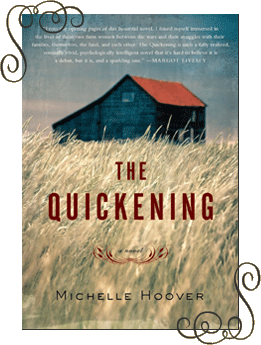With the semester picking up speed and things really starting to get done on the journal, we’ve come to realize that it’s also about that time that we ought to start introducing the interns working on Superstition Review this semester. We strive to be in touch with our reading audience and that includes letting you get to know our entire student staff. We feel it gives you perspective as the reader, especially when getting to know the personalities of our editors as they change each term with new faces every semester.
I suppose I should go first, though, since I’ll be the one writing the updates here for the next three-and-change months, and then introduce our team members as I interview them.
My name is Kat Corliss, and I’m serving on the Web Design team. I’m the Blogger. I’m a student of the College of Liberal Arts & Sciences, majoring in English: Creative Writing: Fiction, with a focus on Young Adult Literature. I am a Senior this semester and will be graduating December 2009.
Superstition Review: What do you do for SR?
Kat Corliss: I’m the Blogger for SR, which means I write tri-weekly posts about what’s going on with the production magazine in our blog. I’ve also kind of become the Social Networker, in a sense. I maintain our Facebook fan page and update our Twitter account. I make sure the public knows what’s going on internally with the journal, I announce calls for submission and deadlines, and I communicate local events pertaining to the literary and art world.
SR: How did you hear about or get involved with Superstition Review?
KC: I was introduced to our Editor-in-Chief, Trish, by a classmate of mine at the 2009 Desert Nights, Rising Stars Writers Conference at ASU Main. Trish had just talked on a panel about SR and it sounded really exciting and something fun to pursue so I submitted my application later that week.
SR: What is your favorite section of SR?
KC: Probably the art section because I’m a really visual person. I like being exposed to new artists all the time. Plus, the online delivery of our journal really allows for higher quality images to be published than a print magazine would.
SR: Who is your dream contributor to the journal?
KC: In writing, it’d be Manuel Munoz, a (now) local writer. He is absolutely amazing. I just read his Faith Healer of Olive Avenue this summer and it was breathtakingly well written, smart, and painful. For artists, I’d have to say Chris McVeigh. He’s just plain fun. His photography often involves LEGOs or Star Wars action figures and it’s just that little connection between passion for creating art and embracing childhood whimsy that I adore.
SR: What job, other than your own, would you like to try out in the journal?
KC: Definitely fiction editor. It’s what I’ve been doing in school for the last few years, it’s what I want to do with my life–edit young adult fiction–so that’d be fun to work on. I’m glad to have been given the opportunity to see the publicity side of journal editing, though, and I’m excited to work on the social networking aspect because it’s new and flexible, a lot of it experimental. I’m never bored with what I get to do for the journal.
SR: What are you most excited for in the upcoming issue?
KC: The changes we’re looking at in formatting. We’re updating our look a bit. We’re hoping it will be ready in time for launch so the Web Design Team has already been in a couple meetings discussing what we’d like to change and what’s working great for us.
SR: What are you currently reading?
KC: Loads of YA lit for a class and an independent study project I’m working on. I just finished a Goosebumps graphic novel–did you know they’ve started republishing the classic scary stories into visual format? How cool is that? I’m also in the middle of The Time Traveler’s Wife, something I picked up over a year ago and haven’t managed to sit down and finish. A stack of graphic novels and comic books. I’m about to start Neil Gaiman’s Anansi Boys.
SR: Do you write? Tell us about a project you’re working on.
KC: Yes, I do. One of my current projects is writing a full young adult novel under the supervision of Dr. Blasingame at ASU Main in an independent study. It’s a story that follows a 17-year-old girl on a trip halfway across the US in her search to find out more about her mother who committed suicide when the girl was a toddler. She ends up reconnecting with a family she didn’t really ever get to know since her father moved her away when her parents had gotten divorced and, in the process, learns a lot about what her mother was like and why she killed herself, and how she’s actually more like her mother than she thinks.
SR: What are some of your favorite websites to waste time on or distract you from homework?
KC: Oh, definitely Facebook. I love Twitter, too, especially since my favorite part of Facebook are the status updates my friends make, and that’s all it really is in my opinion. I also spend a lot of time on LiveJournal, especially in the Literary Tattoos, Trashy Eats, and Thrift Horror communities.
SR: What are some of your favorite literary links?
KC: I definitely follow Neil Gaiman on Twitter, read his blog, and sometimes even listen to his library on LastFM because it’s just plain interesting; he’s one of the authors who has jumped into every aspect of online life and is always just keystrokes away from connecting with fans, and that’s just cool in general, beside the fact that he’s a brilliant writer. I also read Fiction Circus blog posts, one of my favorite literary bloggers/literary magazines. I also enjoy the Australian site, Inside A Dog, created to promote reading to youth by the Centre for Youth Literature.
More intern interviews coming soon!



